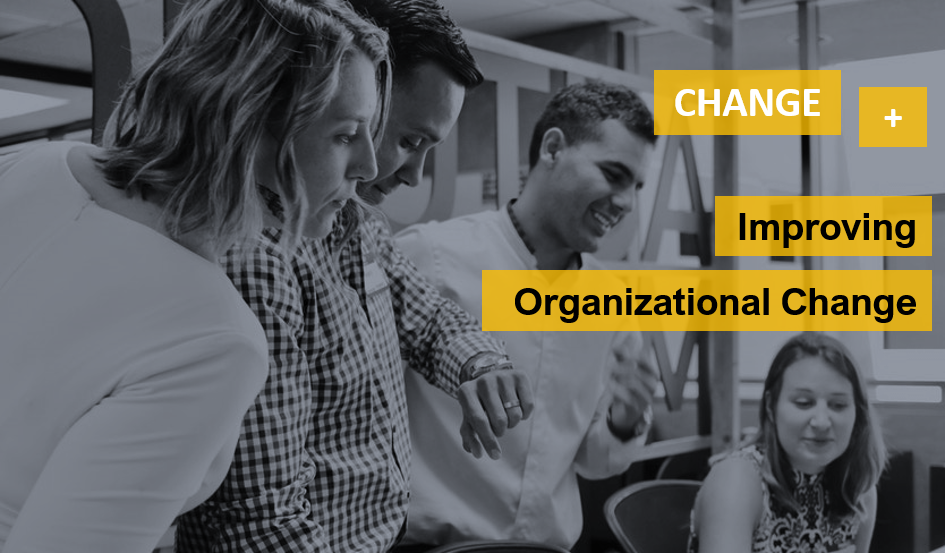Sign Up
Sign In
Blog

2018-12-02 15:49:25 Robert E. Smith, PhD, Founder, The Change Shop
Leaders often lament the fact that change resistance keeps their organizations stuck in the past slowing down much-needed changes. This is true despite the fact that research firm, Gartner shows that 73% of organizations expect more change initiatives over the next few years. Change-related intransigence may be due to skill or competency gaps, attitude or cultural gaps, or some combination making it difficult for teams to move towards a new way of doing things. Our research shows that leaders often factor-in skill and training-related costs when planning for organizational changes such as new ERP systems, CRMs, process improvements, or cultural transformations. But often, these same leaders fail to consider people-related change risks which account for some of the biggest reasons behind why organizational changes fail—most studies put it at between 60-70%. By paying close attention to the change management process by directly collecting input from people impacted, you can avoid losing millions on missed deadlines, underutilized/unused systems, and missed opportunities to engage team members.
What the Research Says About Including Worker Input in the Change Process
In a survey of 500,000 U.S. workers, research firm Great Place to Work found that companies where more people said they felt their ideas were sought out and valued tended to yield higher revenue growth and greater employee productivity. The companies that, on average, scored in the top-quartile of those metrics generated more than five times the revenue growth of companies in the bottom quartile. These results not only show that giving workers a voice in the change process is a good for leading change, it also indicates the importance of looking for ways to engage a cross-section of team members impacted by workplace change. For that, a quick, yet valid change assessment is important.
When Training Isn’t Enough
When it comes to making changes at work, leaders often turn to the most obvious tool—training—and end up spending a small fortune to train people on new systems they do not agree with or are not fully committed to in the first place. Training, while critically important, taken alone is inadequate to address the attitudes and mindset factors that are most critical to creating buy-in and change success. Assessing change-related attitudes is the first step toward effectively engaging the team. Once these attitudes have been assessed, training programs can be tailored to address needed capabilities, training, and communication areas.
Making it Work
Here are 3 steps to ensuring adequate buy-in and commitment to changes at work:
1. Assess change attitudes: A quick survey with feedback options can be worth its weight in gold when that information is used to inform decisions about commitment and resistance levels. By knowing who’s “onboard” with current or planned change and transformation projects, leaders can customize their plans and approaches to ensure emotional, mental, and behavioral buy-in. Since most organizational changes fail due to people-related factors, understanding people-related risks is a game-changer.
2. Leverage line managers: Though the tools for managing and tracking organizational change management often sit with the Human Resources (HR) team, execution of change management strategy sits with line managers. Line managers are often the ones who are going to oversee daily tasks associated with the new ways of working. Involve your key line managers in the process: a good way is to equip them with tools for collecting and analyzing their team’s feedback on organizational changes. The [Team]180 and [Change Leader]180 tools are specifically designed to support line managers in these roles.
3. Create a Change Agent Network: The value of having an informal network of leaders to support and lead change initiatives on-the-ground should not be underestimated. A single conversation, for instance, with a trusted colleague can mean the difference between a team who eagerly adopts the new financial reporting system and another team who only reports 30% of the information needed to make the summary reporting metrics useful. By using assessment data to identify team members who are most engaged in the change effort, you can create a targeted list of team members who will serve as ambassadors for change initiatives.
Multiple Tools, One Platform
The Change Shop offers an all-in-one organizational change management platform that provides a set of 6 tools to help leaders collect input and track / manage organizational changes across multiple teams and the entire enterprise. These tools are based on validate research and cross-industry benchmarks.
Try the free [Personal]180 survey to see a sample report based on your own feedback.
Schedule a demo to see how The Change Shop platform can help improve your change management strategy.
0
Comments